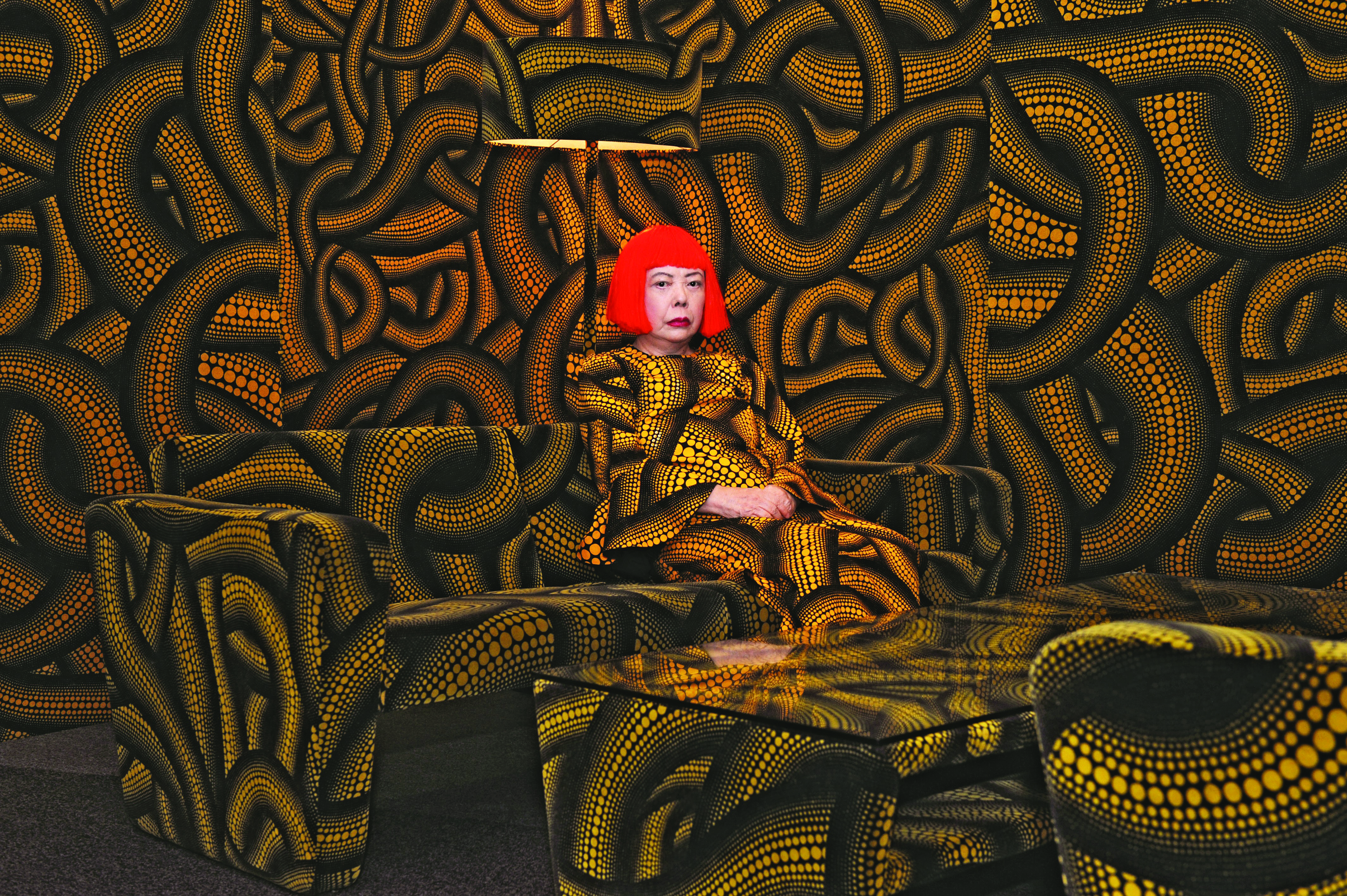
Japan’s Yayoi Kusama comes to the AGO
Kusama-mania has officially hit Toronto. Earlier this month, the Art Gallery of Ontario opened “Yayoi Kusama: Infinity Mirrors,” an exhibition for which the gallery sold more than 60,000 tickets in an online frenzy that kept Torontonians waiting in virtual lineups for hours. (For those who missed out, there are a limited number of same-day tickets released onsite at 10 a.m.) It is the only Canadian stop for the exhibition, and the first North American tour in 20 years for the celebrated Japanese artist whose Infinity Mirror Rooms have helped dub Kusama, “an artist for the Instagram era.” Step inside one of her immersive chambers and you’re surrounded by mind-bending shapes in vibrant hues or lights that are reflected into infinity, giving the dizzying illusion of boundless space—which for many of the visitors to her exhibitions provide a great backdrop for that perfect selfie.
“You become part of this infinite reflection,” says Adelina Vlas, the AGO’s associate curator of contemporary art and coordinator of the exhibition. Six rooms will be on display at the AGO, four of which are fully contained environments where the door closes behind you, completely engulfing you within Kusama’s bold visions. “We live in such an over-saturated images culture. We’re surrounded by visual experiences; we get them instantly and constantly through our hand-held devices. I think it’s very hard to find experiences that still provide a sense of wonder, a unique moment. That’s what Kusama’s Infinity Rooms do. In today’s world, that’s significant.”
Vlas adds, “I see it as this very generous work because it provides this sense of belonging to something bigger than you. Kusama references the universe, the sense of afterlife and energy—we are all a dot, we are all part of this infinity, and she wants us all to have this experience.”
Born in 1929 in Matsumoto, Japan, Kusama briefly studied painting in Kyoto before moving to New York City in the late 1950s, where she was active in avant-garde circles during the formative years of Pop Art and Minimalism, exhibiting her work alongside artists such as Andy Warhol. “Kusama started experiencing hallucinations at an early age, and I think she used art to give voice to that experience,” Vlas explains. “Her concept of infinity evolved into these environments that are all-surrounding experiences and multi-sensory experiences. It was her way of translating her inner world and her inner visions, but also a way of bringing us into that world and into that vision.”
The first room you’ll encounter in the exhibition, which is roughly chronological, is the artist’s milestone installation, Infinity Mirror Room—Phalli’s Field (1965/2016), filled with what the AGO calls a “dense and dizzying array of hundreds of red-spotted phallic tubers.” By contrast, Infinity Mirror Room—Love Forever (1966/1995) involves peering through a window into a hexagonal room of coloured flashing lights that reflect endlessly from ceiling to floor. As you peer in, another visitor can look through the second window, so that you both see each other reflected together into infinity. Kusama’s signature bold polka dots are featured in the room Dots Obsession—Love Transformed into Dots, which is domed and surrounded by inflatables suspended from the ceiling. The artist’s more recent LED environments, such as Aftermath of Obliteration of Eternity (2009) and Souls of Millions of Light Years Away (2013), are filled with lanterns or crystalline balls. Also, on view for the first time in North America is Infinity Mirror Room—All the Eternal Love I Have for the Pumpkins (2016), a bizarre and spectacular field of yellow, dotted pumpkins repeating into infinity.
To maximize the experience, the AGO will permit only four people to enter each room, for only 30 seconds at a time. Gallery-goers who spent hours online to secure tickets should be prepared for lineups and more lineups, as viewers wait to enter each of the Infinity Rooms in the show.
Fortunately, there’s more to see. The exhibition features more than 60 paintings, sculptures and works on paper, including the North American debut of numerous new works. “What surprised me the most and got me the most excited was how the development of the idea of the Infinity Rooms is contextualized within the practice of the artist,” says Vlas. The earliest works in the exhibition are watercolours on paper that Kusama made in the 1950s when she was still in Japan. “When she left Japan to move to New York, the artist destroyed a lot of her work; she only took what she could carry, so we are very fortunate that those works are still with us.” Vlas adds, “Those paintings offer us a window into that early moment of her sensibility, before encountering the larger art community in New York and being exposed to that energy in the city at that time. It’s a precious moment, where we first see the colours and patterns and motifs that Kusama will expand upon throughout her most revelatory works.”
The exhibition fills the fourth and fifth floors of the AGO, spilling over to the second floor with a special, free-with-admission presentation of Kusama’s Narcissus Garden featuring 1,300 stainless-steel mirror balls. Created in 1966, it was one of the artist’s first pieces of performance art; next to a sign reading “Your Narcissism for Sale,” Kusama sold each mirror ball to passers-by for two dollars. Vlas describes it as a continuation in a series of high-profile exhibitions such as David Bowie (2013), Ai Weiwei (2013), Jean-Michel Basquiat (2015) and Guillermo Del Toro (2017). But she adds that the Kusama exhibition is the most space that the AGO has ever dedicated to a living artist. “And it also happens to be a woman artist,” says Vlas. Referencing other recent exhibitions—including the esteemed abstract painter Rita Letendre (2017) and Suzy Lake (2015), whose photographs, videos and performances since the late 1960s explore the body, gender and identity—Vlas points out, “It indicates that as an institution, we are paying attention to the fact that women artists have not gotten the recognition they deserve. We are looking at correcting the history and giving more space to those artists.”
Given that the AGO is breaking new ground—as well as managing an onslaught of visitors—it is perhaps appropriate that the exhibition concludes with Kusama’s iconic participatory installation The Obliteration Room (2002), an all-white replica of a traditional domestic setting. Upon entering, gallery-goers will be invited to cover every surface with multicolored polka-dot stickers, “gradually engulfing the entire space in pulsating colour,” according to the AGO. The obliteration of the traditional, combined with visitor participation in completing the work (and polka dots), makes it the perfect endnote to Toronto’s encounter with Kusama. Not to mention the perfect backdrop for selfies.
Yayoi Kusama: Infinity Mirrors is on view at the Art Gallery of Ontario from March 3 to May 27. During the run, a limited number of same-day tickets will be released onsite at 10 a.m.
(limit of two tickets per person).
www.ago.ca
Photo credit: Kusama in Yellow Tree/Living Room 2010, © Yayoi Kusama




